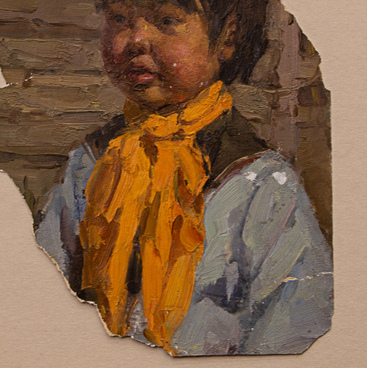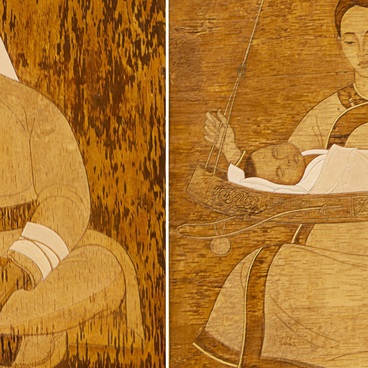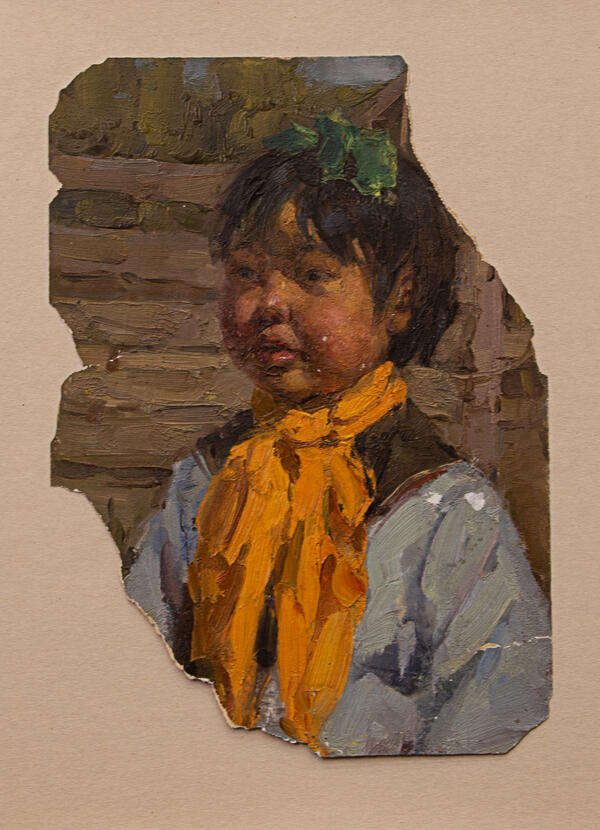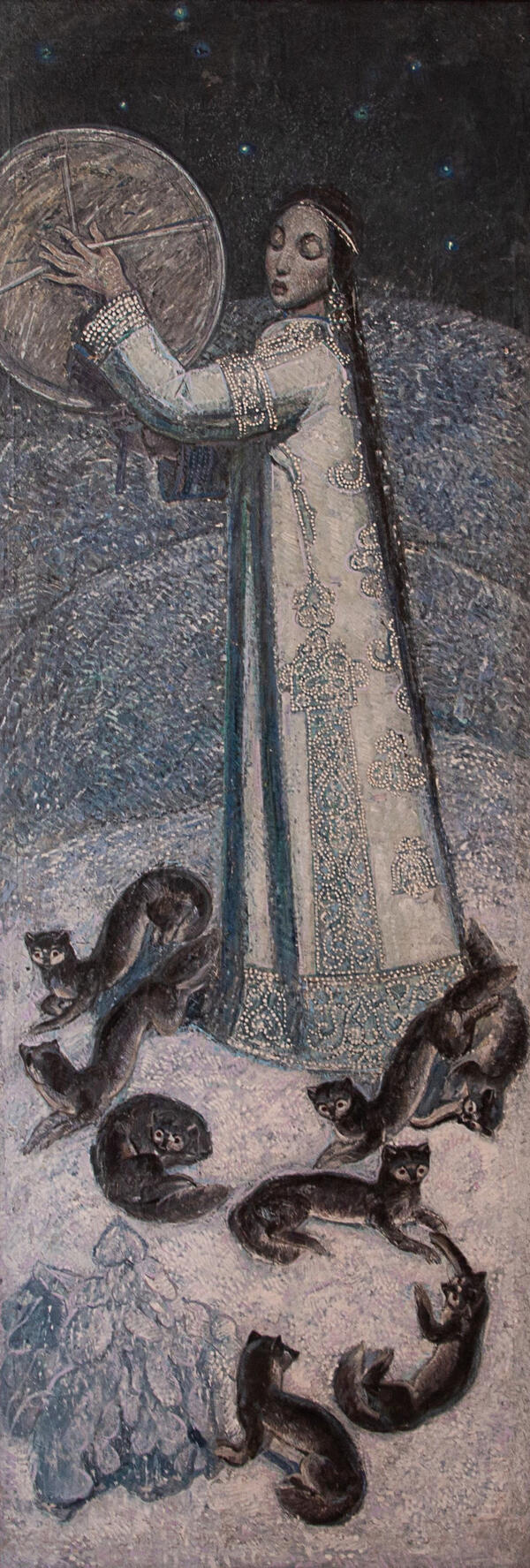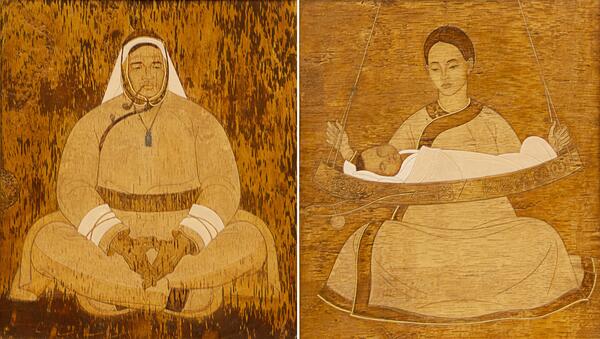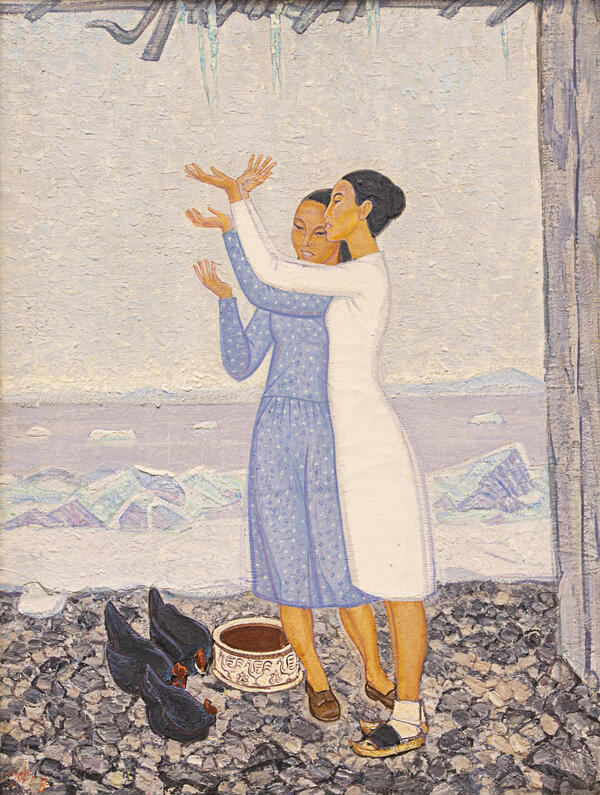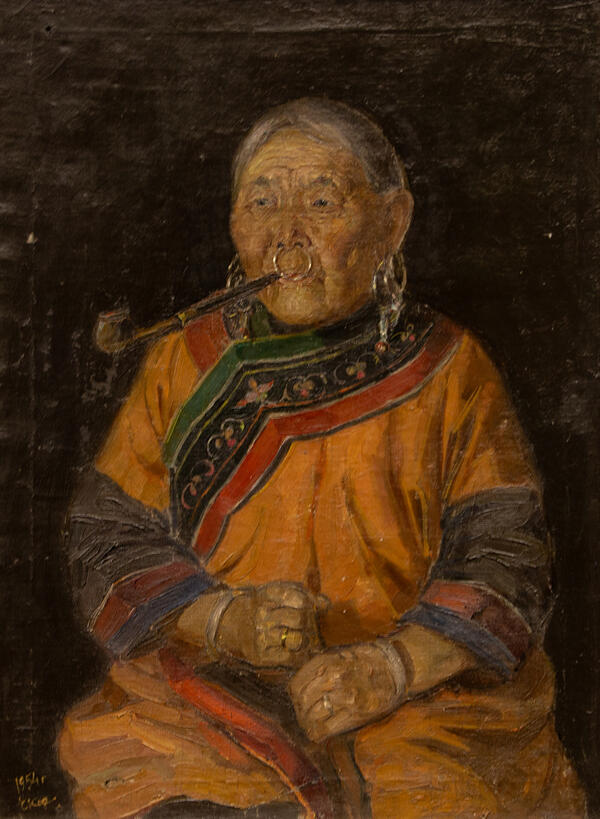Kondon is one of the oldest settlements in the Amur region. According to archaeologists, over fifty villages were located on its territory at different times, which indicates the impressive popularity of this area. The big Kondo-Khureni hill, which is the natural border of Kondon, has long been considered a sacred place.
In 1956, Yevgeny Korolenko first came to the “capital” of the Nanai people of the Gorin River to have plein air sessions. He would return there many times to make sketches, study the lifestyle of the local people and eventually win their rarely bestowed respect. The Nanai people appreciated good artistic skills and gladly posed for the painter; Nanai grandmothers showed him objects of the ancient arts — embroidery and silver jewelry from their chests.
The works of the Nanai cycle of the 1960s were created in a classical manner and can even be equaled to an ethnography handbook. The cycle includes a portrait of an old hunter Va Pacharaka Samar.
The man is dressed in a festive national coat with ornamentation (everyday coats have fewer ornaments). He is wearing a peculiar headdress: usually, hunters wore small caps on their heads, with earmuffs and a cape, while hats like the depicted one resembled a bonnet and were worn by women and elderly men who wanted to protect themselves from cold weather and draughts.
Later, the artist began to experiment actively: oftentimes he put the brush aside and squeezed paints on cardboard right from the tube to capture the immediate state of nature. His paintings of the 1970s and 1980s became somewhat stylized, which was typical of iconography: in them, figures of people are deliberately elongated, the costumes are painted with just one color and have almost zero ornamentation, and the minimalistic landscape gradually merges with the glow around the focal point.
Yevgeny Korolenko subsequently stopped depicting the culture of indigenous peoples. He explained his decision by saying that the Nanai, Ulch, Nivkh, Udege, and Evenk peoples had already brought up a generation of their own professional artists. His latest works on the subject were a birchbark diptych “Hunter’s Family” and a smalt triptych “In the Realm of Silver Sables”.
In 1956, Yevgeny Korolenko first came to the “capital” of the Nanai people of the Gorin River to have plein air sessions. He would return there many times to make sketches, study the lifestyle of the local people and eventually win their rarely bestowed respect. The Nanai people appreciated good artistic skills and gladly posed for the painter; Nanai grandmothers showed him objects of the ancient arts — embroidery and silver jewelry from their chests.
The works of the Nanai cycle of the 1960s were created in a classical manner and can even be equaled to an ethnography handbook. The cycle includes a portrait of an old hunter Va Pacharaka Samar.
The man is dressed in a festive national coat with ornamentation (everyday coats have fewer ornaments). He is wearing a peculiar headdress: usually, hunters wore small caps on their heads, with earmuffs and a cape, while hats like the depicted one resembled a bonnet and were worn by women and elderly men who wanted to protect themselves from cold weather and draughts.
Later, the artist began to experiment actively: oftentimes he put the brush aside and squeezed paints on cardboard right from the tube to capture the immediate state of nature. His paintings of the 1970s and 1980s became somewhat stylized, which was typical of iconography: in them, figures of people are deliberately elongated, the costumes are painted with just one color and have almost zero ornamentation, and the minimalistic landscape gradually merges with the glow around the focal point.
Yevgeny Korolenko subsequently stopped depicting the culture of indigenous peoples. He explained his decision by saying that the Nanai, Ulch, Nivkh, Udege, and Evenk peoples had already brought up a generation of their own professional artists. His latest works on the subject were a birchbark diptych “Hunter’s Family” and a smalt triptych “In the Realm of Silver Sables”.

